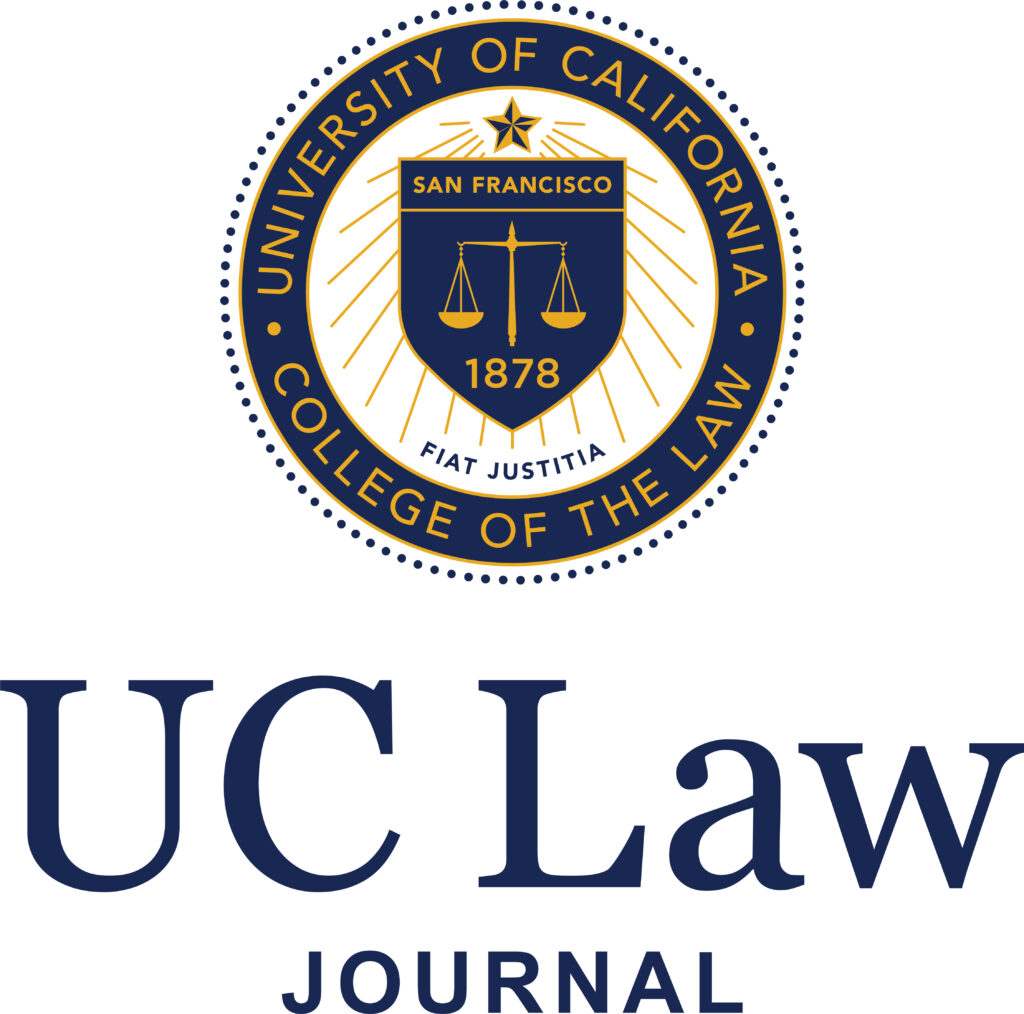CalExit: Good Luck With That
This week some notice has come to a fringe theory that California could and should secede from the United States. We reject both propositions.
States Have No Power to Secede
The first problem California secessionists face is the absence of any authority for secession. There is no legal basis for a state to secede from the Union. Article 4, section 3 of the U.S. constitution has a procedure for adding new states or subdividing existing states—both require Congress to consent.[1] But there is no procedure, at all, in the federal constitution for a state to secede. And Article 3, section 1 of the California constitution says: “The State of California is an inseparable part of the United States of America, and the United States Constitution is the supreme law of the land.” That, plus the fact that (as with the federal charter) the California charter contains no provision for leaving the union, is fairly conclusive that there is no legal procedure for California to secede.[2]
A smart person would counter that absence of evidence is not evidence of absence.[3] But the U.S. Supreme Court quashed that theory in 1869 when, in Texas v. White, it held that individual states could not unilaterally secede from the Union.[4] Thus, even during the Civil War, Confederate states continued to be part of the Union. As Justice Antonin Scalia once wrote, “If there was any constitutional issue resolved by the Civil War, it is that there is no right to secede.”
The secessionists concede that states cannot unilaterally secede from the Union. Instead, they focus on this bit in White as not ruling out that it could be done: “There was no place for reconsideration or revocation, except through revolution or through consent of the States.”[5]
Taking that dicta at face value, assume that White is authority (it’s not) for states to secede through revolution or through consent of the states. A page of history is sufficient to debunk the revolution idea: a group of states called the Confederate States of America tried that in 1861, and it ended with their utter defeat in 1865.
Federalism and the idea of “states’ rights” are not a secessionist’s friend here. It has been long and widely acknowledged that the degree of sovereignty held by the states in our federalist system fundamentally changed following the post-Civil War constitutional amendments.[6] As a result, even if the Confederacy had a plausible substantive constitutional law basis for declaring war, the Fourteenth Amendment now precludes it. Doubtless the secessionists will point out that the American colonies succeeded (through revolution) in seceding from England. But they concede that their plan does not involve armed revolt, so this example helps them not at all.
That leaves consent of the states. To begin the process of seeking that consent, the secessionists propose a ballot initiative asking Californians to declare their support for establishing the Nation of California.[7] The next section describes that strategy’s serious defects.
The Law of Unintended Consequences Applies to Constitutional Change
The previous section discussed the reasons why California could not secede from the Union. Now we show why California should not attempt to secede.
To begin, add to our list of assumptions in this hypothetical the presumption that the secessionists overcome Article 3, section 1 of the state constitution. In that event, the secessionists suggest two possible paths for California’s legal secession from the Union:
- A member of the California delegation to Congress would propose an amendment to the U.S. Constitution allowing California to secede. The amendment would have to be approved by two-thirds of the House of Representatives and two-thirds of the Senate. If the amendment passed it would be sent to the fifty state legislatures to be considered (to satisfy the “consent of the states” requirement in White). At least 38 states would have to agree.
- California could call for a convention of the states, and the amendment granting California its independence would have to be approved by two-thirds of the delegates. If it passed, the amendment would be sent to the fifty state legislatures to be considered. Again, at least and 38 states would have to approve the measure.
The problem of unintended consequences is our answer to the question of whether California should attempt to secede by invoking either of those procedures. Assume that one of those scenarios proves out: majorities of both houses and three-fourths of the states agree to let California go, or a convention of the states is convened. Leave aside the fact that either is exceedingly unlikely to happen. If it started to look as if consensus for amending the constitution existed, or a convention could be called, other actors would notice and seek to take advantage of the open field to advance their agendas, some of which no doubt the secessionists would dislike. The process could result in those legislative riders succeeding with their changes, while California’s secession proposal dies on the vine, leaving Californians worse off. This is the essential problem with unleashing the Kraken of constitutional change—everything is on the table, and all interest groups see their chance to achieve change.
Again, some have tried to be clever here, by limiting the issues a state constitutional convention could consider. In 2009, a group called Repair California tried to qualify two linked initiatives for the 2010 ballot, which would have called a “Limited Constitutional Convention” to consider only specified changes to the state constitution, and prohibited changes to a slate of individual rights and other matters. The measures never qualified for the ballot. Even if they had, there are serious problems with an ex ante attempt to control a convention’s actions. Another page of history is all we need here: recall that the 1787 constitutional convention was only charged with revising the Articles of Confederation. Instead, the convention produced a new document that described a new government rather than a continuation of the Confederation. Even though the convention exceeded its remit, the states overrode the Confederation’s attempt to limit the scope of the convention’s authority, ratified the new charter, and destroyed the previous government. So much for placing limits on constitutional conventions.
Conclusion
It is extremely unlikely California could secede, legally or otherwise. It’s been tried before (by other states), and it ended very badly. So to the secessionists: good luck with that. Try not to destroy the state (or the republic) in the process.
Senior research fellow Stephen M. Duvernay contributed to this article.
[1] Congress has used this procedure, when Vermont was formed from New York, Kentucky and West Virginia from Virginia, and Maine from Massachusetts.
[2] California history does not help the secessionists. The state government actually voted (in 1859) to divide the state in two and requested congressional approval—which never came because the Civil War started. And in 1941, four northern California counties voted to secede and form the new state of Jefferson—which lasted until Japan attacked Pearl Harbor three days later. The first instance shows only the proper use of the constitutional procedure to subdivide a state with Congressional approval. The second is yet another failed rebellion, proving nothing.
[3] See, e.g., Carl Sagan, The Demon-Haunted World: Science as a Candle in the Dark (1997) at 200: “Appeal to ignorance—the claim that whatever has not been proved false must be true, and vice versa (e.g., There is no compelling evidence that UFOs are not visiting the Earth; therefore UFOs exist—and there is intelligent life elsewhere in the Universe. Or: There may be seventy kazillion other worlds, but not one is known to have the moral advancement of the Earth, so we’re still central to the Universe.) This impatience with ambiguity can be criticized in the phrase: absence of evidence is not evidence of absence.”
[4] Texas v. White (1869) at 726: “The Constitution, in all its provisions, looks to an indestructible Union, composed of indestructible States. When, therefore, Texas became one of the United States, she entered into an indissoluble relation. All the obligations of perpetual union, and all the guaranties of republican government in the Union, attached at once to the State. The act which consummated her admission into the Union was something more than a compact; it was the incorporation of a new member into the political body. And it was final. The union between Texas and the other States was as complete, as perpetual, and as indissoluble as the union between the original States. There was no place for reconsideration, or revocation, except through revolution, or through consent of the States. Considered therefore as transactions under the Constitution, the ordinance of secession, adopted by the convention and ratified by a majority of the citizens of Texas, and all the acts of her legislature intended to give effect to that ordinance, were absolutely null. They were utterly without operation in law. The obligations of the State, as a member of the Union, and of every citizen of the State, as a citizen of the United States, remained perfect and unimpaired. It certainly follows that the State did not cease to be a State, nor her citizens to be citizens of the Union.”
[5] White at 700.
[6] McDonald v. City of Chicago (2010) at 754 (“The constitutional Amendments adopted in the aftermath of the Civil War fundamentally altered our country’s federal system.”). See also Fitzpatrick v. Bitzer (1976) at 455-56 (expansion of congressional powers with the corresponding diminution of state sovereignty was made part of the constitution by state ratification of those amendments); Ex parte State of Virginia (1880) at 345 (post-Civil War amendments “were intended to be, what they really are, limitations of the power of the States and enlargements of the power of Congress”).
[7] Here again, Article 3, section 1 of the California constitution (“The State of California is an inseparable part of the United States of America, and the United States Constitution is the supreme law of the land”) is superior to and will override an initiative that merely “declares support” for seceding.




